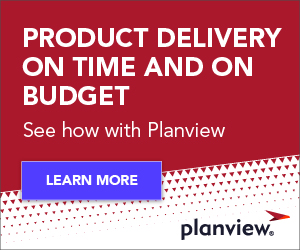
Our customers say one of the reasons they choose Troux for managing their technology portfolios is the software can be configured to set up many kinds of analysis, including application portfolio management (APM). After engaging with hundreds of customers over the years, we’ve identified a number of configurations to support the most common APM challenges. We’ve used that experience, along with feedback from the Inner Circle of customers to standardize a set of APM practices. With the release of Troux 12, all customers can take advantage of what we’ve learned in the field. Here’s some information about what’s new in application portfolio management.
Out of the box, Troux 12 offers configurations for three of the most common APM challenges that used to require a custom setup:
Application Transition Planning
Challenge: Ensuring that everyone, across the organization, knows when an application will be transitioned out of production and what the replacement application will be
Solution: Capturing replacements and date for retiring applications, while presenting the information in an easy-to-understand graphical view
Benefit: Being able to plan when to completely shut down an application. Application portfolio managers can do so confidently, knowing business units that depend on those applications will be covered
Usage Tracking
Challenge: Tracking the complexities of a single application instance used by multiple departments, for multiple functions and for different lengths of time
Solution: Capturing all the ways an application is being used, including when its usage is planned, who will use it and its key transition dates, and presenting the information in simple graphical views
Benefit: Avoiding unknown impacts that could create delays and project failures
Application Assessments
Challenge: Calculating key application metrics when data required is not immediately available, yet needing to assess applications to decide which to keep and retire
Solution: Being able to place any number of simple numeric ranking evaluations (i.e., “On a scale of 1-5”) on your applications and using them in Troux visualizations and analytics
Benefit: Assessing your application portfolio immediately and making application retirement decisions
I’m excited for our users, because Planview’s commitment to identifying best practices and making them available in real time results in a number of benefits to Troux customers and the enterprise architecture (EA) community at large such as:
- Faster implementations mean quicker time to value
- Standard features mean our customers, support staff and developers are all on the same page from the beginning, resulting in better product support
- The use of a common language across internal teams, external partners and user groups means better, overall communication
Of course, all this application information is only valuable if you can view and interact with the data in the ways needed. That’s why, in Troux 12, we’ve continued to invest in EA visualizations, such as the hierarchy map and timeline views, in Troux Insight.
What provides a comprehensive APM offering for EAs? The answer is 12 – Troux 12.
Check back soon for our next blog entry, where Planview product manager Dominique Trimino and I will detail these newly released visualization enhancements.

![Project Management Software: Chaotic Ways of Working [Video]](https://blog.planview.com/wp-content/uploads/2017/08/Chaotic-Ways-of-Working-2.jpg)


